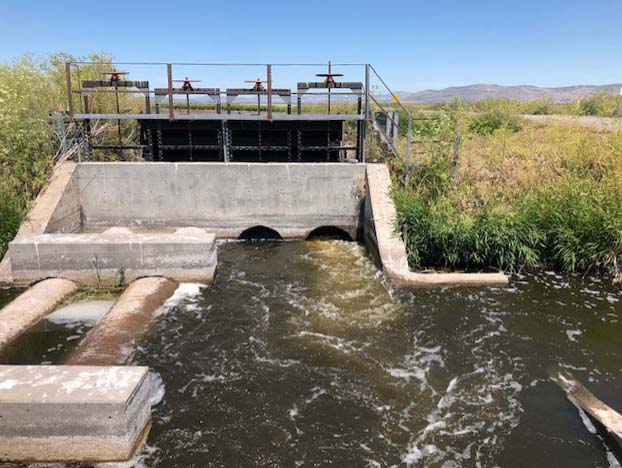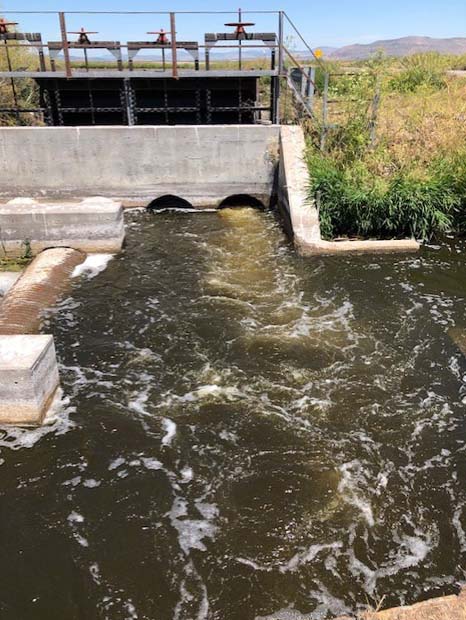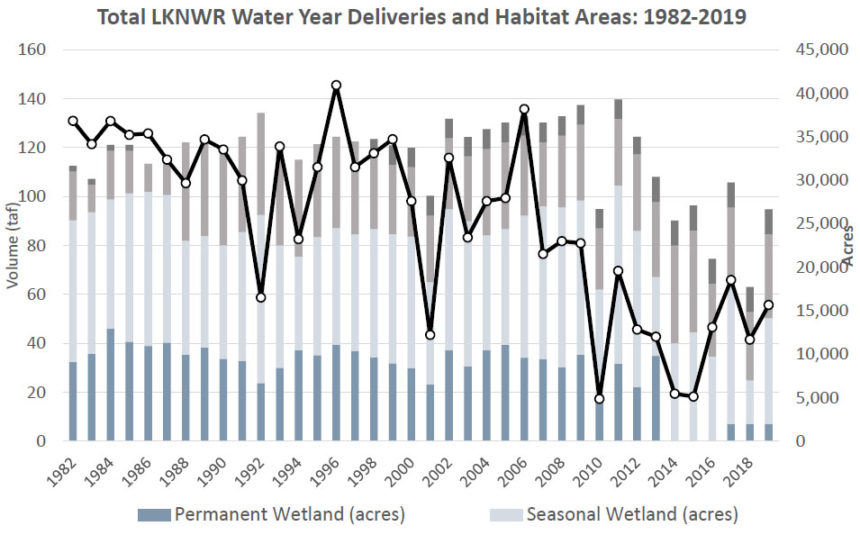
Feb 12, 2021
A key precursor to getting more water for Lower Klamath

The U.S. Fish and Wildlife Service is accepting comments on its draft environmental assessment of water supply options for Lower Klamath National Wildlife Refuge. The document, which evaluates alternatives for the Service to acquire and transfer water rights from willing sellers to Lower Klamath National Wildlife Refuge, is an important precursor to actually acquiring water rights.
The refuge needs 105,000 acre feet of water per year to meet its habitat objectives. It has averaged less than half that since 2006, and wetland habitat has disappeared along with the water. Lack of water greatly exacerbated a botulism outbreak in the Klamath Basin last summer - more than 60,000 ducks, geese and shorebirds died of the disease.
The alternatives examined in the draft environmental assessment include:
- No action (status quo).
- A generalized search for water rights transfers from willing sellers.
- A focused water rights transfer from a group of individual ranchers who have expressed interest in using their water rights to benefit Lower Klamath.
The U.S. Fish & Wildlife Service, which prepared the document, recommends that the federal government proceed with the focused water rights transfer in Alternative C, which would provide up to 30,000 acre feet of water for the refuge.
California Waterfowl’s Lower Klamath Task Force is working hard to facilitate the proposed action by raising private funds and advocating for federal and state funding. California Waterfowl will comment on the draft environmental assessment and will provide a link to our comments when they are completed. We encourage California Waterfowl members who submit comments to send copies of the comments to California Waterfowl at jvolberg@calwaterfowl.org.
The draft environmental assessment will be available during a 30-day public review period, which ends March 14, 2021. Comments on the draft should be emailed to fw8plancomments@fws.gov.
Depending on the comments received, the environmental assessment will be used as the basis of either an Environmental Impact Statement (EIS) or a Finding of No Significant Impact (FONSI). The latter would be the fastest path to acquiring water rights for the refuge.
—Jeffrey A. Volberg, director of water law and policy



